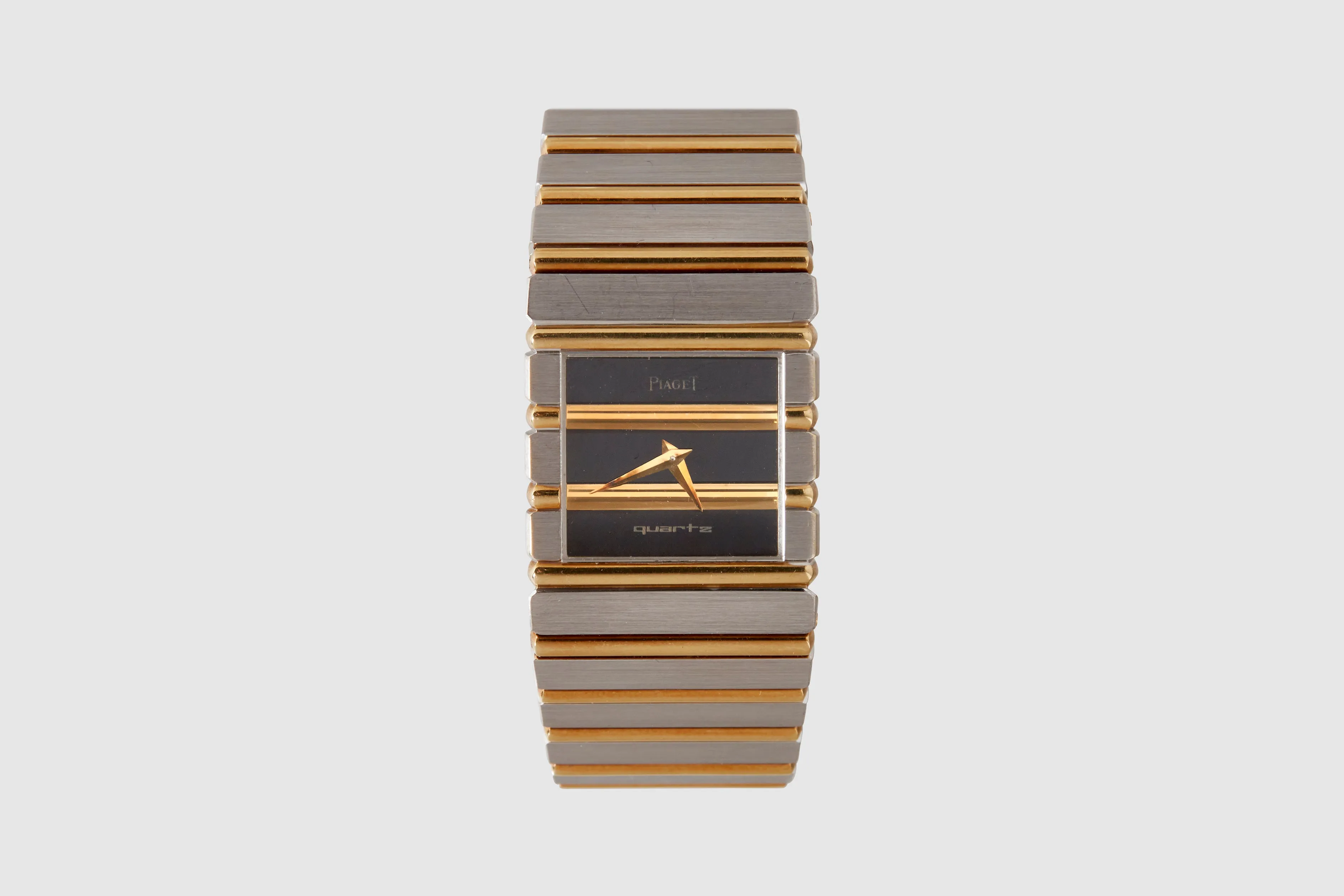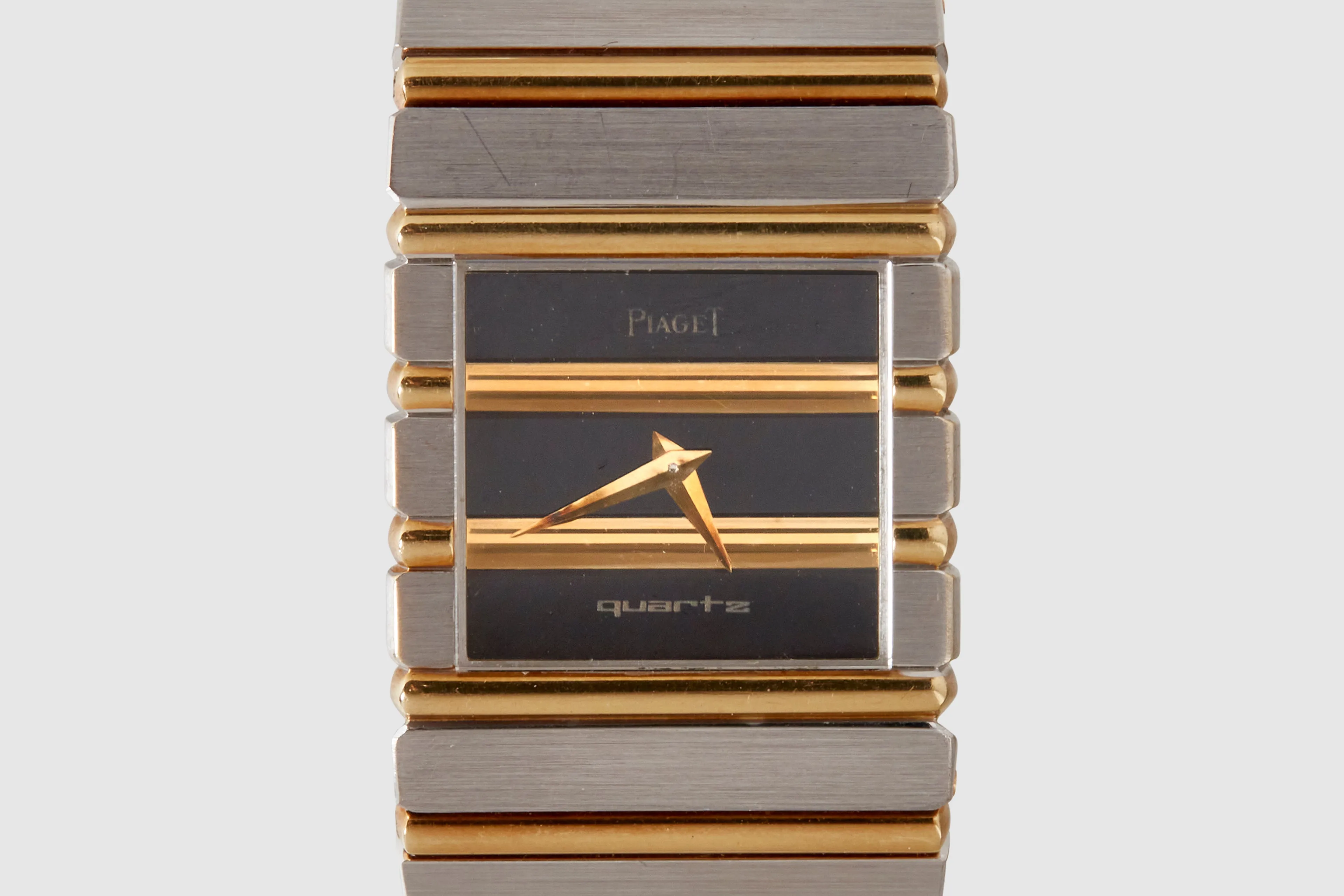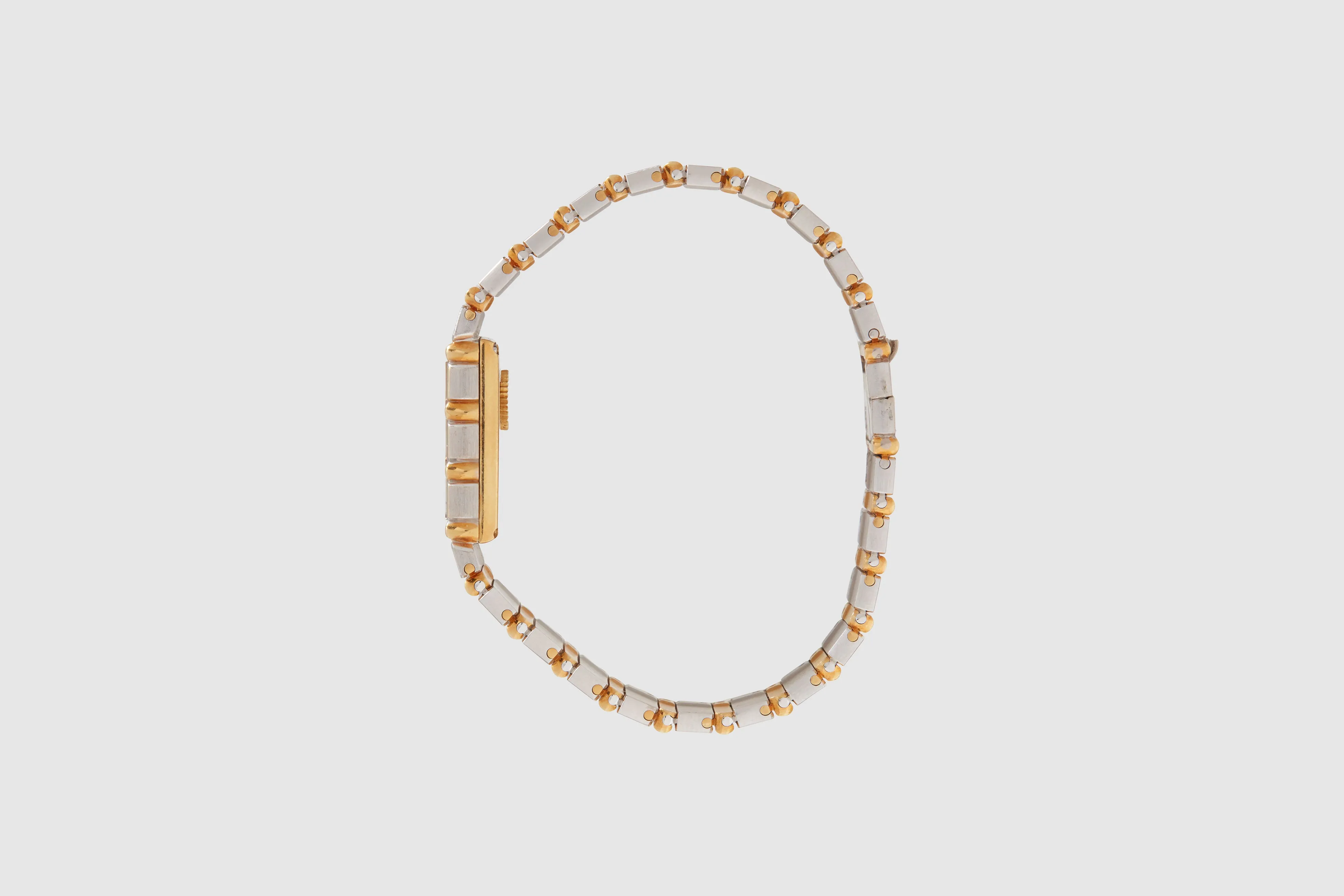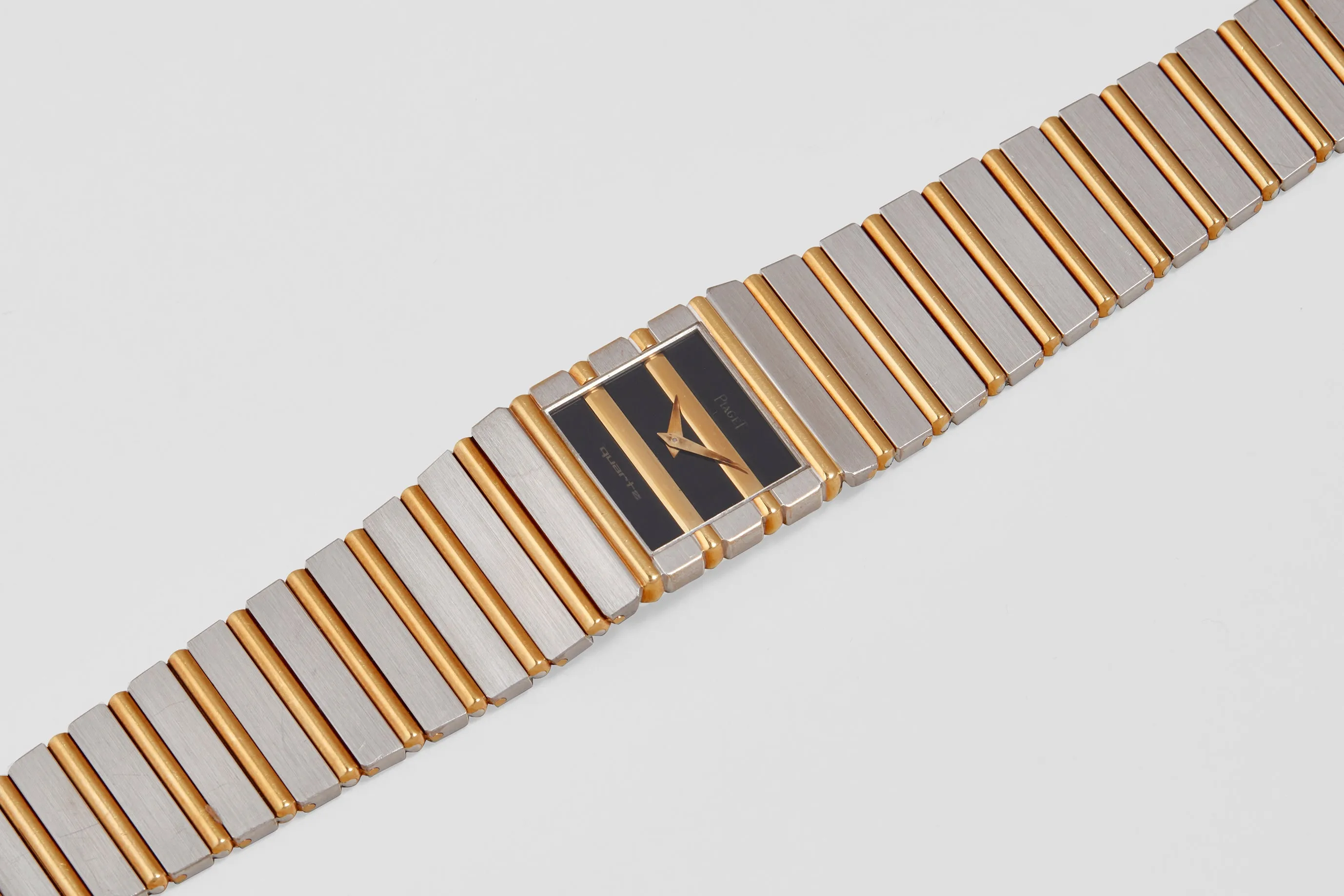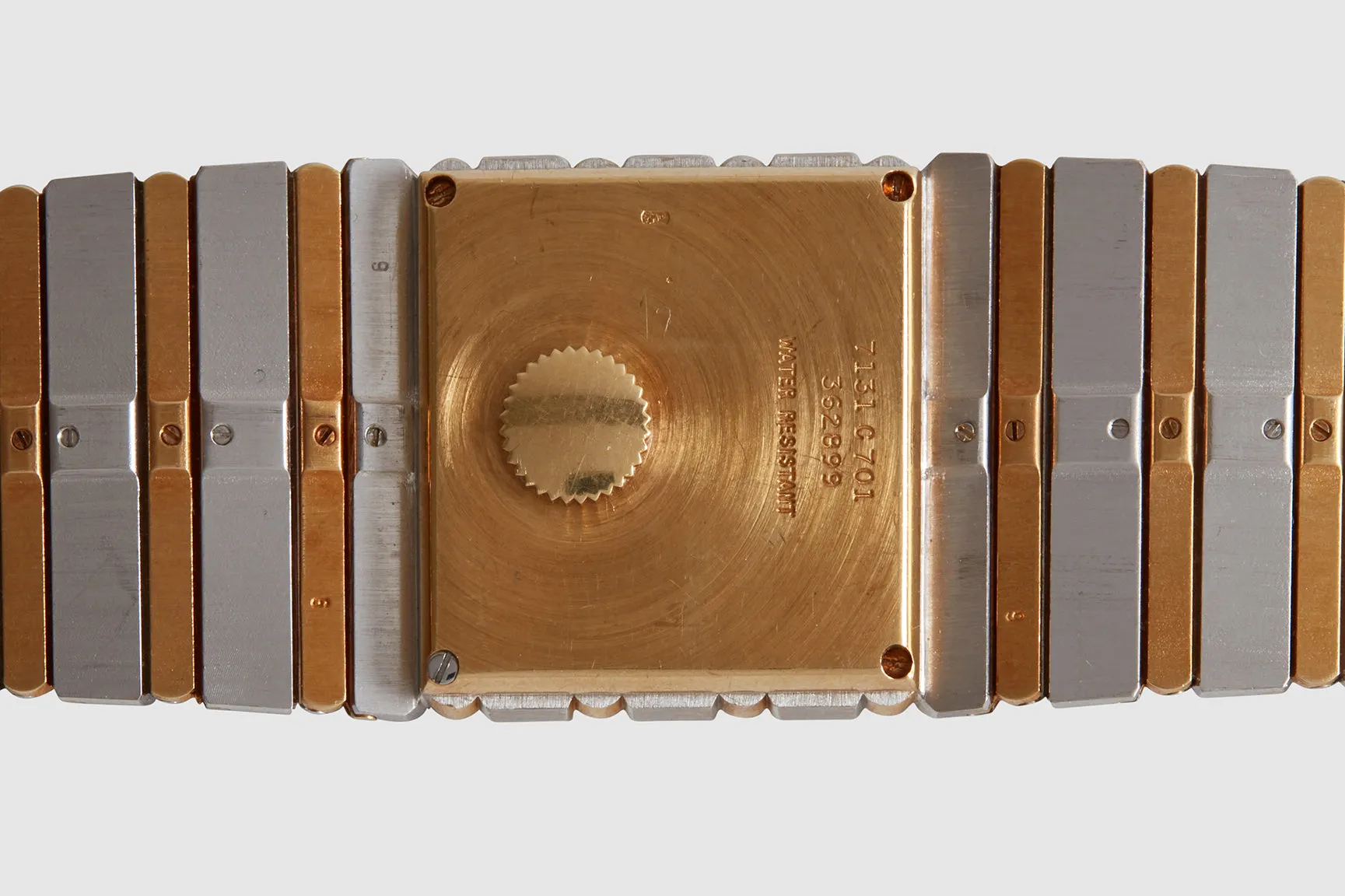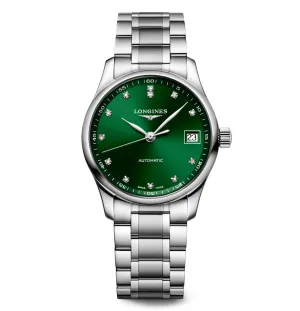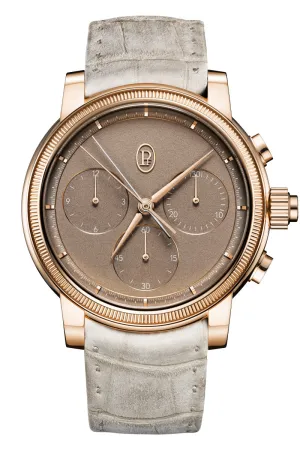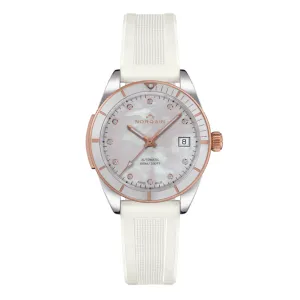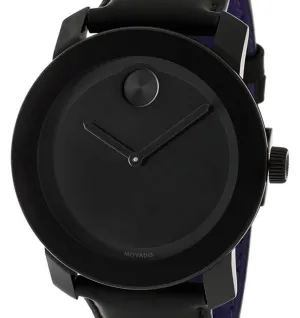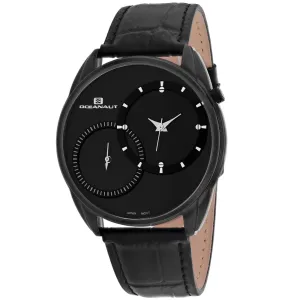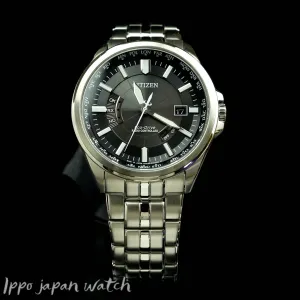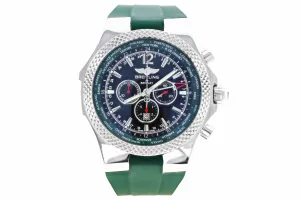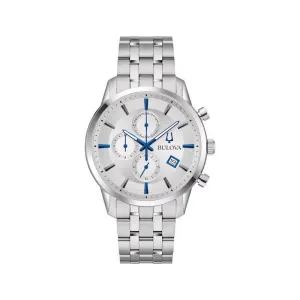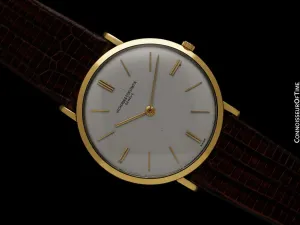A solid eighteen carat yellow and white gold single piece bracelet with integrated watch. There are a number of watches over the years that have a bracelet feel to them, and it is fair to say that the Piaget Polo tank (along with the Rolex King Midas) have successfully owned this approach to men’s watches. Many, many women’s watches were designed this way – and some to astonishingly beautiful degrees – but rarely do the men’s examples stand out like this.
The Piaget Polo, the brainchild of Yves Piaget, was a child of the 1970’s, introduced in ‘79. This was the height of the ongoing quartz crisis in Switzerland, and the influx of cheap battery powered watches from Asia were putting immense pressure on the Swiss watchmaking elite. Many collapsed and others went to the extreme to promote how lavish, luxurious and talented their watch making houses were. This is indeed what Yves did with the Polo. A collection launched very much as a “His and Hers”, it came in both a Tank shape, and the classic round. To read the advertisement from the time tells the story of how proud the watchmaker was with their new creation and the lengths in which they went to in producing it:
“The bracelet is hand-carved, link by link, from a solid block of 18 carat gold. The matching case is sculpted by hand in La Côtes-aux-Feés, Switzerland''
The name selection too was not by chance: it resonated with the jet set crowd at the time and tapped into the luxury, regal and powerful elite. In 1985, Piaget’s Polo team celebrated the watch by riding their ponies down Manhattan’s Fifth Avenue. The watch was loved by the rich and the famous, with icons such as Andy Warhol and Miles Davis selecting it for their very public wrists. The Polo name still lives on with Piaget, but looks very different today. Understandable, but sad.
This watch is what one comes to expect from Piaget. This company really is the jeweler among watchmakers. The seamless and beautifully free flowing bracelet is intricately made with a tapering pattern of bullet shaped links, high polished, and flat larger block links, matte finished. The overall combination is exceptional. Perhaps on the back one can really appreciate the craftsmanship –there is almost a central spine holding all the adjoining link screws that keep the whole bracelet together (which also makes it very easy to size). This example is one of the earlier examples as it has the folding "P" Piaget logo buckle closures, not the later folding over safety closure.
It is forgivable to not even immediately see the watch dial. Such as its design, it was made to perfectly reflect the design of the case surrounding it. Therefore we have a repeat of the bullet high polish shape matched with the flat matte panels. A slight addition of the Piaget logo can be found under the 12, and the very small “Swiss” logo found beneath the 6. Being that this is a stone dial there are no ring of minute and hour polished “beads” to assist in telling the time. It is a much cleaner look. All of which are tracked by the handsome solid eighteen carat gold dauphine shaped hands.
The watch also has the rare detail of being a backwound piece. Being quartz, there is no actual winding needed. But, setting the time can be done by lifting the slim crown up from the case back. This further adds to the mystery of whether this is in fact a watch at all at first glance. On the back of the screwed in case back of the watch are all the relevant serial numbers, logos and branding and gold assay marks. It would appear as if the watch has never been polished, and remains in excellent condition with only very light wear, and very true to its stunning original form. Overall, this watch may not appeal to all watch fans. But, it will appeal to any and all jewelry fans, who then also get a watch along for the ride. This is perhaps one of the most rare Polo watches to have ever been made. Research has uncovered all white gold examples with onyx dials. Mainly yellow gold, with white gold bullets, and all yellow gold with the onyx dial. This may well be one of the first examples in this iteration to come to market since its original sale in the late 1970's early 1980's.
The bracelet measures close to seven inches in length. It can easily be reduced if needed. If too small it is possible to source additional links. Please contact us before purchasing.

